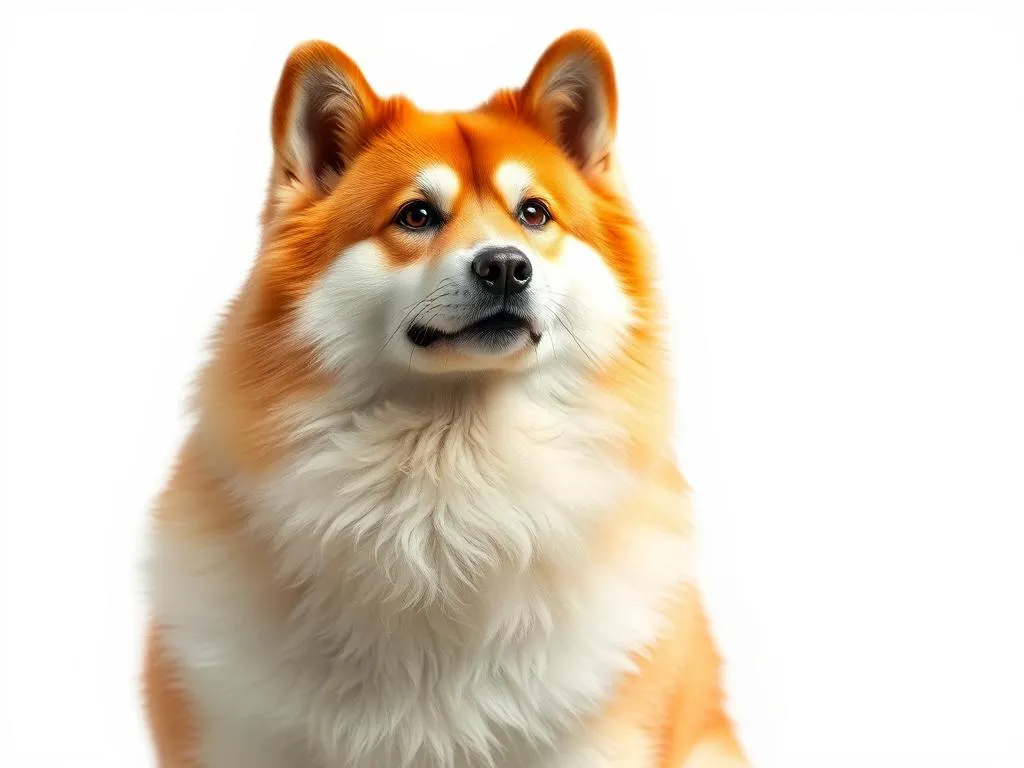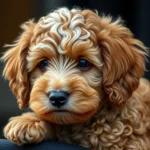
Introduction
The Akita Inu, a majestic breed known for its loyalty and nobility, has captured the hearts of dog lovers around the world. Originating from the mountainous northern regions of Japan, this breed was initially developed for hunting large game, including bears and boars. The Akita Inu is recognized in various countries, including the United States, where it gained popularity in the early 20th century and has since become a symbol of loyalty.
One of the fascinating aspects of the Akita Inu is its colors and coat patterns. These attributes not only contribute to the aesthetic appeal of the breed but also play a significant role in breed standards. Understanding the various Akita Inu colors and coat patterns can deepen your appreciation for this remarkable breed and help potential owners make informed decisions.
Understanding Akita Inu Coat Colors
Common Coat Colors
White
The white Akita Inu presents a striking and elegant appearance. This color typically features a pure, snow-white coat that stands out against the backdrop of its muscular build. White Akitas are often appreciated for their regal look and are known for their kind and gentle personalities.
Brindle
The brindle pattern is one of the most captivating variations in the Akita Inu breed. This pattern consists of a base color overlaid with darker stripes, creating a unique and visually appealing effect. Brindle Akitas are cherished for their individuality, and the combination of colors can vary significantly from dog to dog.
Red
The red Akita Inu is perhaps the most iconic representative of the breed. This vibrant color can range from a deep copper to a light russet. Red Akitas often have a black mask, which adds depth to their expression. The intensity of the red hue can vary, making each red Akita uniquely beautiful.
Fawn
Fawn is another common color found in Akita Inus, characterized by a lighter shade of red or yellow. Fawn Akitas often have white markings on their face and legs, which enhance their charming appearance. This color is sometimes mistaken for yellow but has distinct warm undertones.
Rare Coat Colors
Black
The black Akita Inu is a rare find and is often associated with a strong, commanding presence. This coat color can vary in shade from deep black to a more muted charcoal. The rarity of black Akitas makes them particularly sought after, and they often stand out in a crowd.
Chocolate
The chocolate Akita is another rare color that captivates enthusiasts. This rich, brown hue is a result of specific genetic combinations and can vary from light milk chocolate to dark chocolate tones. Chocolate Akitas are not only visually stunning but also have a gentle demeanor, making them wonderful companions.
Silver
Silver is an even rarer color in Akita Inus, often achieved through a combination of specific genetics. Silver Akitas have a unique sheen to their coat and can appear almost ethereal. This color is a stunning addition to the breed’s palette and is often associated with elegance and grace.
Coat Patterns of Akita Inu
Solid Coat Patterns
Solid coat patterns are characterized by a uniform color throughout the dog’s body. While they may seem simple, solid-colored Akitas are appreciated for their classic look. These coats can come in any of the primary colors—white, red, brindle, fawn, black, chocolate, and silver.
The advantages of solid colors include easier grooming and a more straightforward aesthetic appeal. However, some owners may prefer the complexity of patterns, which can add personality to their dog.
Brindle Patterns
Understanding brindle patterns is essential for any Akita enthusiast. The unique brindle effect is created by the interplay of dark stripes on a lighter base color. This pattern is often seen as a mark of distinction and is favored by many breeders for its striking appearance. The brindle gene works in a way that allows for a variety of combinations, ensuring that no two brindle Akitas look exactly alike.
Piebald Patterns
The piebald pattern in Akita Inus is characterized by large patches of white on a background of another color, typically red or brindle. This pattern creates a dramatic visual effect and is sometimes misunderstood in terms of breed standards. Piebald Akitas can be just as loving and loyal as their solid counterparts, and their unique look often attracts attention.
Masked Patterns
Masked patterns refer to markings on the face that create a mask-like appearance. These can vary significantly in size and intensity, sometimes covering just the eyes and nose or extending across the entire face. Masked patterns are particularly appealing to many Akita owners, as they add depth and character to the dog’s expression. The combination of mask patterns with other colors can create breathtaking visual diversity within the breed.
Genetics Behind Coat Colors and Patterns
Genetic Factors Influencing Coat Colors
Understanding the genetics behind Akita Inu colors and patterns provides insight into why certain combinations appear. The breed’s coat colors result from a mix of dominant and recessive genes, with certain colors being more prevalent due to their genetic inheritance. For instance, the red color is often dominant, while colors like chocolate and silver are recessive and less common.
Breeding practices significantly affect the colors seen in Akitas. Responsible breeders consider the genetics of both parents to ensure that desired traits are passed down, leading to healthier and more genetically diverse litters.
Color Testing and Certification
The importance of genetic testing cannot be overstated, especially for those involved in breeding programs. Testing can help determine a dog’s genetic background, ensuring that breeders are aware of any potential hereditary health issues related to specific colors or patterns.
Understanding the American Kennel Club (AKC) standards for colors and patterns is also crucial for breeders and owners. The AKC recognizes specific colors and patterns, and deviations can impact a dog’s eligibility for show competitions. Knowing these standards helps maintain the integrity and quality of the breed.
Care and Maintenance for Different Coat Types
Grooming Needs
Regardless of the color or pattern, all Akita Inus require consistent grooming to maintain a healthy coat. Regular brushing is essential, particularly during shedding seasons, to remove loose hair and prevent matting. Bathing should be done as needed, typically every few months, to keep the coat clean and fresh.
Seasonal Shedding
Akitas, like many double-coated breeds, experience significant shedding during seasonal changes. Understanding when to expect heavy shedding can help owners prepare for increased grooming sessions and manage the dog’s environment. Providing a balanced diet and adequate hydration also supports coat health and minimizes shedding.
Health Considerations Related to Coat Colors
While coat colors and patterns are primarily aesthetic, certain colors may be linked to specific health considerations. For example, merle patterns, although not recognized in Akitas, can sometimes lead to vision problems in other breeds. It’s crucial for prospective owners to consult with breeders about any potential health issues associated with specific colors.
Diet and nutrition play a vital role in maintaining a healthy coat. High-quality dog food that includes essential fatty acids can promote a shiny, healthy coat and support overall well-being.
Choosing the Right Akita Inu for Your Lifestyle
Matching Coat Colors to Lifestyle
When selecting an Akita Inu, consider how the coat colors and patterns may align with your lifestyle. Solid-colored Akitas may require less maintenance, making them suitable for owners with busy schedules. In contrast, those who appreciate the unique beauty of brindle or piebald patterns may find joy in the additional grooming that comes with these striking looks.
Personal Preferences vs. Breed Standards
While personal preferences are important, adhering to breed standards is equally crucial for responsible ownership. Potential owners should familiarize themselves with the standards set by organizations like the AKC and choose a dog that not only appeals to their aesthetic preferences but also meets the breed’s health and temperament criteria.
Adoption and Rescue Considerations
For those considering adopting an Akita Inu, finding the right color or pattern may require patience and flexibility. Many shelters have Akitas of various colors and patterns waiting for a loving home. Understanding that mixed-breed Akitas might exhibit a combination of colors and patterns can also open up more opportunities for adoption.
Conclusion
In summary, the Akita Inu colors and coat patterns contribute significantly to the breed’s appeal and identity. From the striking white and regal red to the rare chocolate and silver hues, each color brings its unique charm. Understanding the genetics behind these colors and patterns, as well as the grooming and care needs associated with them, is essential for any prospective owner.
Ultimately, choosing the right Akita Inu involves balancing personal preferences with adherence to breed standards. Whether you’re drawn to the classic solid colors or the unique brindle patterns, the key is to find a companion that fits seamlessly into your lifestyle. The Akita Inu, with its rich history and stunning variety, promises to be a loyal friend, regardless of the color or pattern you choose.









